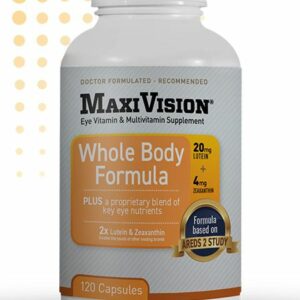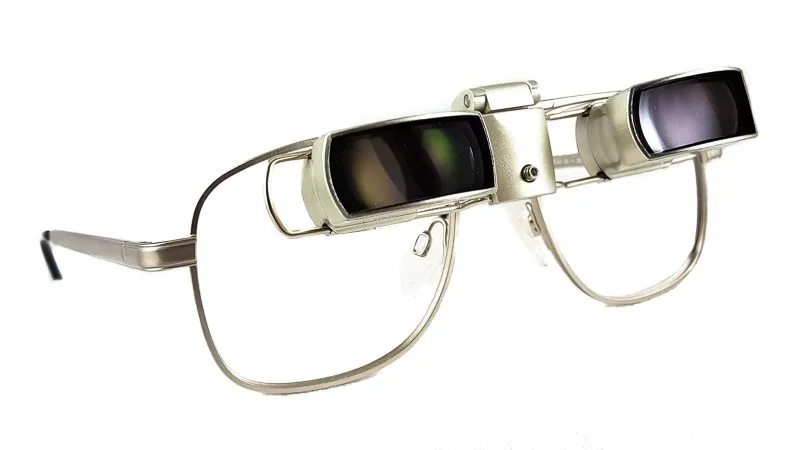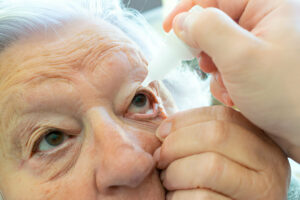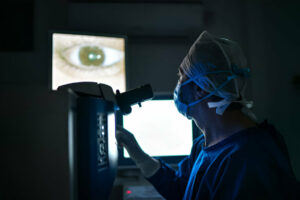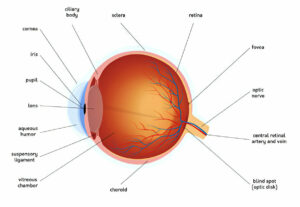Cataract surgery can restore your vision by replacing the cloudy lens of your eye with an artificial plastic lens. While recovery times vary between patients, most can return to non-strenuous activities within days after uncomplicated cataract surgery.
However, if your job involves strenuous activity or exposure to dust, sweat and dirt, a longer recovery period may be required.
1. Wait at Least a Week
Cataracts cause vision to blur, impairing quality of life for many patients. If cataracts impair your ability to drive or complete other tasks, surgery should be considered immediately so as to maintain independence and maximize quality of life.
Cataract surgery is a safe and effective solution that involves implanting an artificial plastic lens into your eye to replace its cloudy natural lens, usually within an hour or two. Recovery takes time; to ensure a positive experience and achieve rapid healing, please follow all instructions from your surgeon for optimal outcomes.
In the first week after surgery, it is best to avoid activities which require close focusing like reading, using computers and mobile devices, watching television or movies and reading newspapers. Instead, take frequent breaks from these activities by looking farther away or looking at something further away, providing your eyes a break from sustained near focus activity. Dusty environments should also be avoided to protect against germs and infection.
By the third or fourth day after surgery, you should feel generally recovered. Though you may still experience mild ache or headache symptoms, over-the-counter pain relievers like Tylenol should help manage any discomfort that remains. If pain becomes intense, reach out to your surgeon’s office so they can provide options for relief.
Your doctor will inform you when it’s safe for you to resume work and other regular activities, including driving. In most cases, this should occur several days following surgery; however, before making this decision on your own it’s a good idea to consult your ophthalmologist first to confirm this decision is safe for you.
If your cataract surgery required road or air travel, wait at least a week after having it and have someone accompany as your driver. Not only will this ensure comfort and injury-free travel but will also allow someone nearby to be available should any complications arise during your recovery period. Having someone take care of you allows you to rest and recuperate more comfortably during recovery time.
2. Wear an Eye Shield
Cataract surgery is an extremely straightforward procedure that replaces your natural lens of your eye with an artificial plastic one. This generally takes less than an hour and results in improved vision for many. Following your doctor’s recovery instructions is key in order to avoid complications like dry eyes and inflammation that could arise after this surgery.
Most patients can resume non-strenuous activities within days after cataract surgery, although wearing an eye shield during sleeping or napping, showering or using soap directly on your eye is advised for safety purposes and can help avoid accidental rubbing on surgical site and accidental soap entering eye directly. It may also be wise to follow your physician’s prescribed eyedrop regimen throughout recovery to control infection and inflammation.
Due to the small incision made during surgery, your eye will likely feel irritated for weeks or months following surgery due to its small incision site. Lubricants like Hylo, Genteal or Refresh may help relieve discomfort and irritation after using them for eye treatments.
After surgery, it is advised to avoid dusty environments and swimming for at least a month. Furthermore, it’s also wise to refrain from sneezing or coughing deeply as well as lifting heavy objects during this time period.
After cataract surgery, it is normal to experience a crescent-shaped shadow around the edges of your vision in certain lighting conditions. This side effect should gradually fade over time. Flying at high altitudes may also result in temporary increases in eye pressure due to gas bubbles in your cornea forming; to ensure safe travel after cataract surgery it is wise to consult your ophthalmologist to ascertain whether such travel poses risks to your eyes and how best to plan it.
As part of your initial recovery period, it is advised that someone drive you home from the office during your first week after surgery to allow you to rest and recover comfortably before returning to driving again with approval from your physician.
3. Avoid Lifting Heavy Objects
Cataracts can form gradually over years or decades, and most people don’t notice until their vision becomes so dim they cannot safely complete everyday tasks. At this point, cataract surgery will likely be required in order to restore clear vision that cataracts have taken away from you; but if you plan to travel soon after surgery it is important to understand how recovery might impact your travel plans.
Most patients needing cataract surgery should treat the first week post-op as a recovery period. It’s essential to avoid strenuous activities, particularly those which involve rubbing the eyes or contact with dirt or sweat, during this time. In order to protect them, tape an eye shield over both of your eyes during these times to protect from unintended rubbing.
Your cataract surgery won’t allow you to drive home afterward, so you will require transportation from and to the airport. A friend or family member could provide this help; additionally they could also accompany you on flights as an added comfort measure.
If you plan to return to work soon after cataract surgery, discuss a timeline with your employer and request modified schedule or accommodations from them. Inquire with your physician for specific advice based on their knowledge of your individual recovery needs.
As you heal from cataract surgery, your vision should gradually improve with each passing day. But keep in mind that healing times will vary for each patient and it could take some time before you achieve desired results.
When in doubt about your recovery, consult an ophthalmologist. They are best equipped to provide guidance as to what is safe and appropriate for you. Make sure you adhere to COVID-19 safety protocols wherever possible, but always listen to what your body tells you.
Air travel can be both safe and stressful after cataract surgery; by being prepared and following your ophthalmologist’s recommendations, you can ensure a relaxing yet safe flight experience.
4. Wear Sunglasses
Cataract surgery is a relatively safe procedure that can drastically enhance your quality of life. But, you will require time off work so that your eyes can heal completely after their procedure.
Even though cataracts can be treated with new eyeglasses, brighter lighting, anti-glare sunglasses and magnifying lenses, it is still vitally important to visit an ophthalmologist regularly for a comprehensive eye exam. At these visits, your ophthalmologist can recommend an updated prescription and offer strategies to manage early symptoms of cataracts.
Many people develop cataracts due to age-related eye health conditions like aging, diabetes and high blood pressure. If you’re at risk of cataracts, eating healthy, quitting smoking and engaging in regular physical activity are crucial steps towards maintaining good eye health. Checking blood pressure regularly and scheduling annual physicals are also vitally important measures that will keep your vision protected.
If you are at high risk for cataracts, it is crucial that you speak with your family doctor and explore the advantages of cataract surgery as an option for vision loss prevention from glare, halos or blurriness. Surgery could offer relief and may be suitable option for you.
Remember that cataract surgery is major eye surgery and wait until approved by your surgeon before flying. Furthermore, try scheduling the operation at a time and place where you will remain near home for several weeks afterward in case any complications arise following surgery; that way you can easily visit your surgeon if complications arise afterward.
If you are at a higher risk for cataracts, it may be beneficial to discuss working from home or making other accommodations during the COVID-19 pandemic. When returning to work it is recommended that sunglasses be worn to protect your eyes from sunlight and other light sources; also it’s wise to follow infection prevention measures to reduce risks as much as possible.

